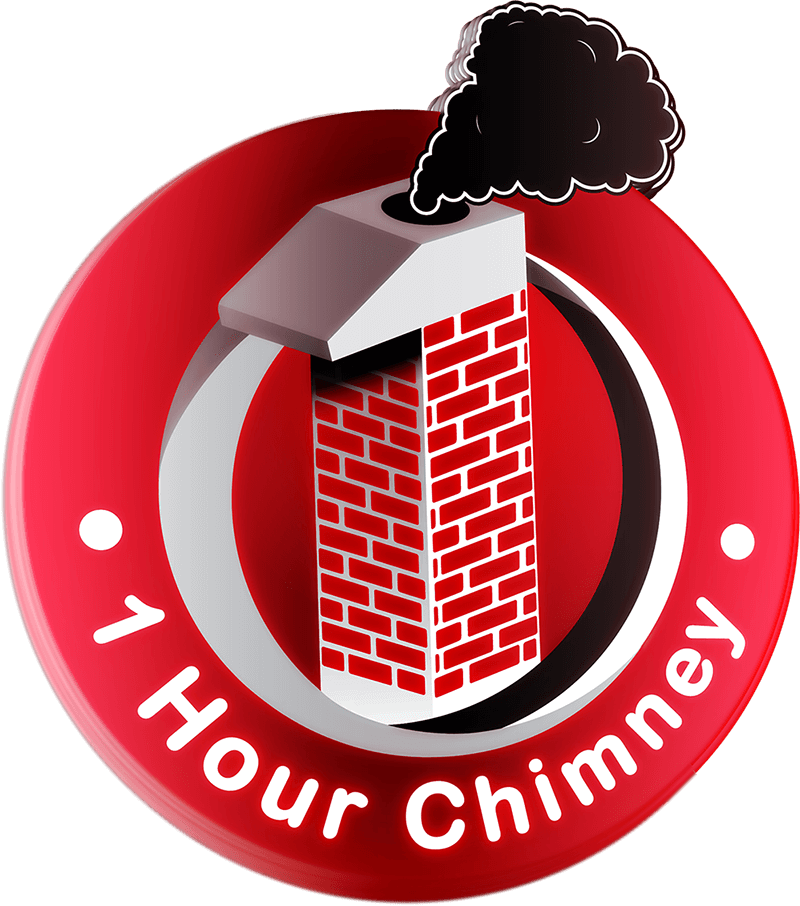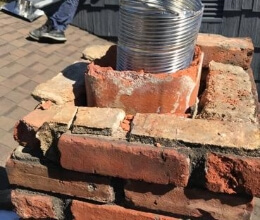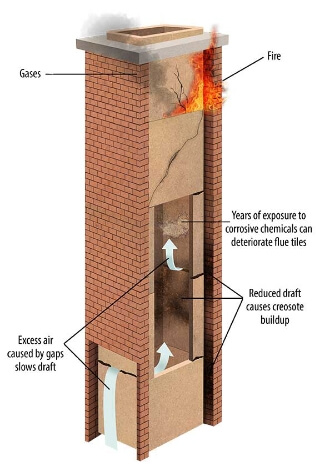
Level 2 Chimney Inspection
Protect your home from hazards by inspecting your chimney

Protect your home from hazards by inspecting your chimney
A level 2 chimney inspection is conducted by running a inspection camera through the interior of the fireplace and chimney to inspect for concealed damage to the flue liner, as well as the inspection of the exterior of the chimney.
A level 2 chimney inspection is conducted by running a inspection camera through the interior of the fireplace and chimney to inspect for concealed damage to the flue liner, as well as the inspection of the exterior of the chimney.
These Inspection Standards are recognized throughout the United States by the Fireplace and Venting Industry as “The Industry Standards”. Based on this fact, the inspector is professionally and legally obligated to abide by these standards. These standards are recommended in the best interest of all parties.
Because the Chimney Business is not regulated in US, any Home Improvement company can perform Level 2 Inspection. CSIA (Chimney Safety Institute of America) recommends that only Certified CSIA Companies perform the inspection because they are professionally trained to do so.
Level 2 Inspection is indicated when verification of the suitability of the chimney for new or changed conditions of service is needed, or when a Level I inspection is not sufficient to determine the serviceability of the chimney is needed.
Also, Level 2 Chimney Inspection is highly recommended when there is a transfer of property, to make sure that new homeowners are fire-safe and carbon monoxide safe once they move into the house.
According to U.S. Consumer Product Safety Commission (USCPSC) (http://www.cpsc.gov/library/fire07.pdf), there are 26000 residential fires and 20 deaths per year related to chimneys. In addition, there are $6.4 Billion in residential structure fire property losses per year.
It is imperative that prior to moving to their new home, general buying public insures that their chimneys are SAFE. Home inspectors (according to American Society of Home Inspectors – ASHI) are NOT required to inspect interior flues of chimneys nor are they qualified to do so. Home inspectors disclaim the internal elements of the chimney for the simple fact that it is inaccessible and cannot be viewed during a routine VISUAL HOME INSPECTION. Since they cannot see it, it falls outside the scope of their inspection.
“If the flue liner in a chimney has softened, cracked, or otherwise deteriorated so that it no longer has the continued ability to contain the products of combustion (i.e., heat, moisture, creosote, and flue gases), the liner shall be either removed and replaced, repaired, or relined with a listed liner system or other approved material that will resist corrosion, softening, or cracking from flue gases at temperatures appropriate to the class of chimney service. “


